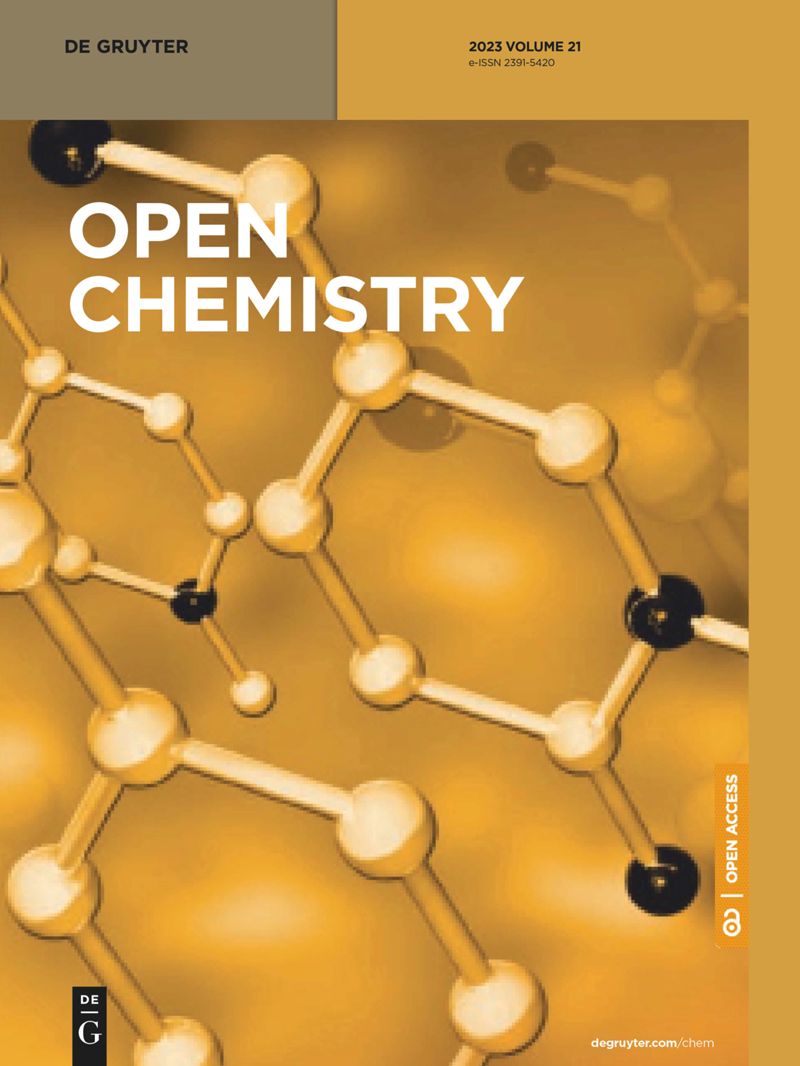A fast, sensitive, greener, and stability-indicating HPLC method for the standardization and quantitative determination of chlorhexidine acetate in commercial products
IF 1.9
4区 化学
Q3 CHEMISTRY, MULTIDISCIPLINARY
引用次数: 0
Abstract
The goal of the proposed work was to create and verify a fast, sensitive, greener, and stability-indicating high-performance liquid chromatography (HPLC) method to quantify chlorhexidine acetate (CHDA) in commercial products. The developed method was validated for numerous validation metrics and greenness. The greener mobile phase was made up of a ternary mixture of ethanol, water, and glacial acetic acid (50:49:1 v/v/v). CHDA was detected at a wavelength of 265 nm. The developed HPLC method showed a coefficient of determination of 0.9981 and was linear in the 1–100 µg/mL range. In addition, the developed method for CHDA analysis was rapid, accurate, precise, robust, and sensitive. The outstanding greenness profile was indicated by the derived values of the Analytical Eco-Scale, ChlorTox, and AGREE scales for the current approach, which are 89, 0.74 g, and 0.77, respectively. With its breakdown products present, the proposed analytical approach was still able to identify CHDA, demonstrating its selectivity- and stability-indicating qualities. Two distinct commercial products, A and B, were found to contain 1.96 and 2.05% w/v of CHDA, respectively. These results revealed that CHDA in commercially accessible products can be routinely standardized and quantified using the proposed HPLC approach.一种快速、灵敏、绿色、稳定的高效液相色谱法,用于商业产品中醋酸洗必泰的标准化和定量测定
拟议工作的目标是创建并验证一种快速、灵敏、更环保、稳定的高效液相色谱(HPLC)方法,用于定量检测商业产品中的醋酸洗必泰(CHDA)。所开发的方法通过了多项验证指标和绿色验证。绿色流动相由乙醇、水和冰醋酸(50:49:1 v/v/v)三元混合物组成。CHDA 的检测波长为 265 nm。所开发的高效液相色谱法的测定系数为 0.9981,在 1-100 µg/mL 范围内线性良好。此外,所开发的 CHDA 分析方法具有快速、准确、精确、稳健和灵敏的特点。当前方法的分析生态尺度、ChlorTox 和 AGREE 尺度的推导值分别为 89、0.74 g 和 0.77,这表明该方法具有出色的绿色环保特性。在存在分解产物的情况下,建议的分析方法仍然能够识别 CHDA,这表明了其选择性和稳定性指示品质。两种不同的商业产品 A 和 B 分别含有 1.96% 和 2.05% w/v 的 CHDA。这些结果表明,使用拟议的 HPLC 方法可以对市售产品中的 CHDA 进行常规标准化和定量。
本文章由计算机程序翻译,如有差异,请以英文原文为准。
求助全文
约1分钟内获得全文
求助全文
来源期刊

Open Chemistry
CHEMISTRY, MULTIDISCIPLINARY-
CiteScore
3.80
自引率
4.30%
发文量
90
审稿时长
6 weeks
期刊介绍:
Open Chemistry is a peer-reviewed, open access journal that publishes original research, reviews and short communications in the fields of chemistry in an ongoing way. The central goal is to provide a hub for researchers working across all subjects to present their discoveries, and to be a forum for the discussion of the important issues in the field. The journal is the premier source for cutting edge research in fundamental chemistry and it provides high quality peer review services for its authors across the world. Moreover, it allows for libraries everywhere to avoid subscribing to multiple local publications, and to receive instead all the necessary chemistry research from a single source available to the entire scientific community.
 求助内容:
求助内容: 应助结果提醒方式:
应助结果提醒方式:


